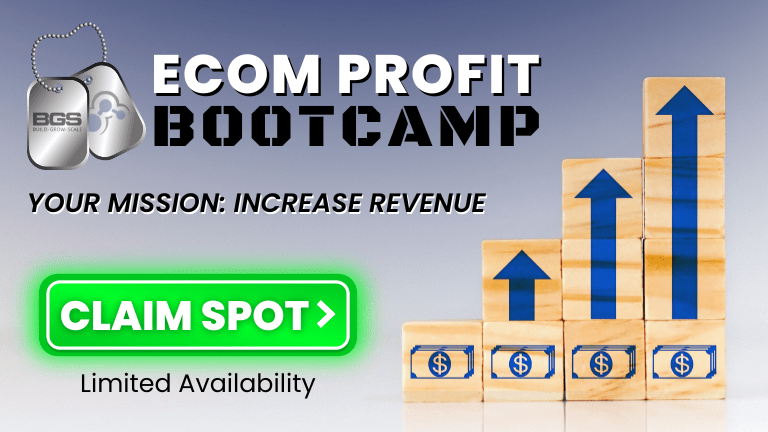How to Find A Niche in The Market in 5 Easy Steps

Dolly Tomas | Jun 12, 2023
Reading Time: 7 minutesAre you tired of being lost in the crowded ecommerce market? Are you struggling to find a way to stand out and make a profit? The solution lies in understanding how to find a niche. But how do you find the right niche for your ecommerce business? In this article, we will guide you through five simple steps to help you find a profitable and sustainable niche in the market.
The first step is to brainstorm potential niches. This means identifying areas in the market that are not yet saturated and where you have some level of expertise or interest. It could be a particular product, service, or even a subculture. Don’t limit yourself to what you already know. Be open to exploring new ideas and trends.
Once you have a list of potential niches, it’s time to move on to the next step: researching profitability and competition, but first, let us dive into the first step of brainstorming in detail.
Brainstorming Potential Niches
Now that you are aware of how to find a niche, let’s start brainstorming some potential niches that we can explore in the ecommerce market. One of the first things you should consider is your own interests. Think about your hobbies or passions that could be turned into a profitable niche. For example, if you love yoga, you could create an ecommerce store selling yoga mats, blocks, and clothing. This is a great way to merge your interests with your business, and it also makes it easier to market your products since you’re familiar with the niche.
Another way to find potential niches is to look at what’s currently trending in the market. Use social media platforms like Instagram and Twitter to see what people are talking about and what products are popular. This can give you an idea of what niches are currently in demand. For example, if there’s a lot of buzz around sustainable living, you could create an ecommerce store selling eco-friendly products.
Lastly, consider the gaps in the market. Look for niches that are currently underserved or overlooked by other ecommerce stores. This could be as simple as creating a store specializing in selling organic pet food. By filling a gap in the market, you can carve out a profitable niche for your business. Remember, finding a niche is all about identifying a need and providing a solution that isn’t currently being met.
Researching Profitability and Competition
To gauge the profitability and level of competition in your potential market, you should start by researching the pricing, quality, and demand of other products similar to yours. Look for products that are similar in nature to yours, and see how they’re priced. This will give you a good idea of the market rate for your product.
You should also look at the quality of the products being sold and compare it to the quality of your product. Next, you need to research the demand for your product. You can do this by looking at search volume data for keywords related to your product. This will give you an idea of how many people are searching for your product online.
You should also look at social media trends and see if there’s any buzz around your product. If there’s a lot of buzz, it could be a good sign that there’s demand for your product. You need to research the level of competition in your potential market.
Look at the number of competitors in your market and see how well they’re doing. If there are a lot of competitors, it could be a sign that the market is saturated. However, if there are only a few competitors, it could be a sign that there’s a gap in the market that you can fill.
Researching the profitability and competition in your potential market will give you a good idea of whether or not your niche is worth pursuing.
Narrowing Down Your List
Once you’ve gathered data on profitability and competition, it’s crucial to narrow down your list of potential markets to focus on. You don’t want to spread yourself too thin by trying to appeal to too many different niches. Instead, focus on the ones that have the highest potential for success.
Start by evaluating each market based on factors like demand, competition, and profitability. This will help you identify the most promising opportunities.
To narrow down your list even further, you may want to conduct some market research. This can involve reaching out to potential customers and getting their feedback on your product or service. You can also look at what your competitors are doing and try to find ways to differentiate yourself. By doing this, you’ll be able to identify the markets that have the most potential for growth and profitability.
Once you have narrowed down your list of potential niches, it’s time to start testing your ideas. This can involve creating a prototype, launching a small-scale marketing campaign, or conducting a survey to gauge interest. By testing your ideas, you’ll be able to get a better sense of which markets are worth pursuing and which ones to leave behind.
Ultimately, the goal is to find a profitable and sustainable niche over the long term.
Validating Your Chosen Niche
Now that you’ve narrowed down your list to a chosen niche, it’s time to validate it. This involves conducting further market research and getting feedback from potential customers.
This step is crucial in determining whether your chosen niche has a viable market and if it’s profitable. You need to ensure that there is a demand for the products or services you’re planning to offer.
One effective way to validate your niche is to conduct keyword research. You can use tools like Google AdWords Keyword Planner or SEMrush to find out the search volume and competition for specific keywords related to your niche. If there are high search volumes and low competition, it’s a good sign that there is a demand for your niche.
Another way to validate your niche is to get feedback from potential customers. You can create surveys or questionnaires and distribute them to your target audience. Ask them about their preferences, needs, and pain points related to your niche.
Their responses can help you identify potential problems and opportunities for improvement. By validating your niche, you can minimize risks and increase the chances of success in your ecommerce business.
Launching and Evaluating Your Ecommerce Business
Ready to launch your ecommerce business? You’ll need to evaluate its success by monitoring key performance indicators and adjusting your strategy accordingly.
One of the most important metrics to track is your conversion rate, which measures the percentage of visitors to your site who make a purchase. A low conversion rate could indicate that your website isn’t user-friendly, your marketing isn’t effective, or your products aren’t appealing to your target audience. By analyzing your conversion rate and making changes to improve it, you can increase your revenue and grow your business.
Another key metric to track is your customer acquisition cost (CAC), which measures the amount of money you spend to acquire each new customer. If your CAC is too high, it may be difficult to achieve profitability in the long term. To reduce your CAC, you can experiment with different marketing channels and tactics, such as social media advertising, search engine optimization, or influencer partnerships. By finding the most effective ways to attract new customers, you can maximize your return on investment and scale your business more efficiently.
It’s important to monitor your customer retention rate, which measures the percentage of customers who make repeat purchases from your store. A high retention rate can indicate that your products and customer service are exceptional and that your customers are loyal and satisfied. To improve your retention rate, you can offer loyalty programs, personalized recommendations, or exceptional customer support. By nurturing your relationship with your existing customers, you can increase their lifetime value and create a sustainable, profitable ecommerce business.
Final thoughts on how to find a niche in the market
Congratulations! You’ve successfully gone through the process of finding a niche in the market for your ecommerce business. By following the 5 simple steps on how to find a niche in the market outlined in this article, you’ve identified potential niches, researched their profitability and competition, narrowed down your list, validated your chosen niche, and launched your ecommerce business.
Now that you have found your niche, it’s time to focus on growing your business. Keep an eye on your competition and continue to research and adapt to changes in the market.
Stay connected with your customers and listen to their feedback to improve your products and services. Remember, finding a niche is just the first step in building a successful ecommerce business.
With dedication, hard work, and a willingness to learn, you can turn your niche into a thriving business. So go ahead and take that leap of faith, and may your ecommerce business soar to new heights!
Frequently Asked Questions
Typically, it can take anywhere from a few weeks to several months to find a profitable niche in the ecommerce market. It depends on your research skills, the competition, and your willingness to experiment and make adjustments based on data.
When faced with multiple viable niche options, evaluate each based on market size, competition, and profitability potential. Use data-driven research to make an informed decision. Trust your instincts, but don’t ignore the numbers.
Unexpected challenges can arise when validating a niche, such as difficulty in finding a target audience, low demand, or strong competition. Conduct thorough research, testing, and analysis to ensure the profitability and sustainability of your chosen niche.
To avoid mistakes when researching profitability and competition in a potential niche, focus on finding a balance between demand and competition. Don’t choose a niche that is too saturated, but also don’t choose one with no demand. Use data to inform your decisions.
Entrepreneurs should be aware of the misconception that launching and evaluating an ecommerce business is easy and requires little effort. In reality, it takes time, research, and a willingness to adjust strategies as needed to succeed in the competitive market.





